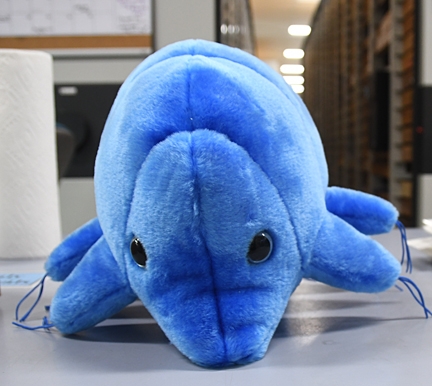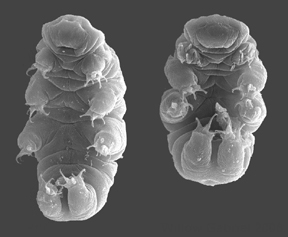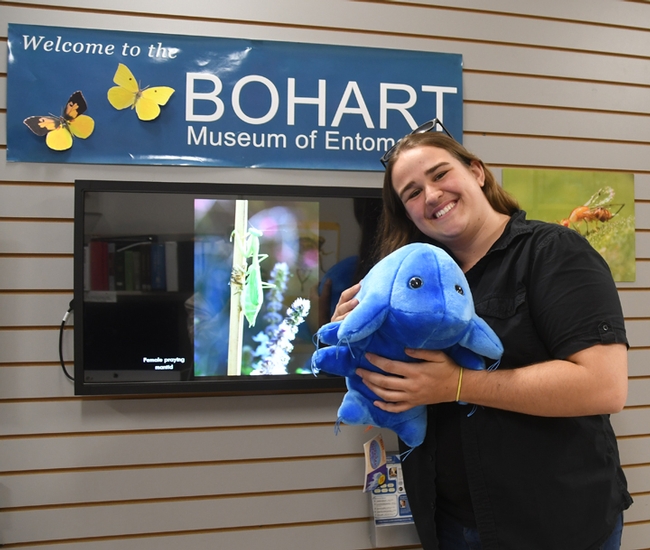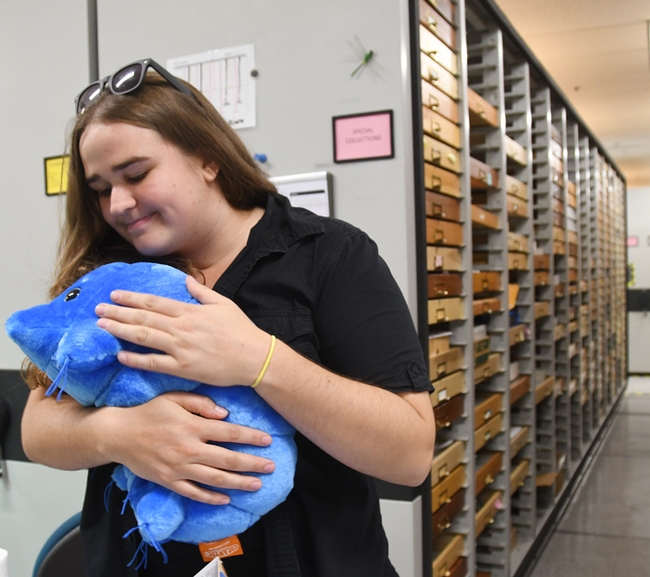
There's a new bear in town.
Stuiffed toy animals resembling tardigrades, aka "water bears," are all the rage at the Bohart Museum of Entomology's year-around gift shop at the University of California, Davis.
The bright blue plush toys are just as cuddly, fluffy and pudgy--if not more so--than the traditional teddy bear.
Lynn Kimsey, director of the Bohart Museum and professor of entomology, UC Davis Department of Entomology and Nematology, wrote about the tardigrades in her newsletter several years ago.
The water bear "has to be one of the most peculiar and indestructible groups of animals known," she wrote. The microscopic and nearly indestructible tardigrade can survive being heated to 304 degrees Fahrenheit or being chilled for days at -328 F. And, even if it's frozen for 30 years, it can still reproduce. See video on EurekAlert.
They belong to their own phyllum, the Tardigrada (meaning "slow steppers"), and to date there are some 1,500 described species throughout the world. "Tardigrades can survive high pressures of more than 1,200 atmospheres found in the bottom of the abyss," Kimsey related. "They can tolerate 1,000 times more ionizing radiation than other animals."

"This collection is the result of years of collecting, mounting, imaging, and identifying by former collection manager Bob Schuster and emeritus professor Al Grigarick and their collaborators," she noted.
What's the water bear look like? It has a barrel-shaped body, eight pudgy legs, and the adults usually range from 0.3 to 0.5 mm in length.
German zoologist Johann August Ephraim Goeze (1731-1793) first described the critters in 1773, referring to them as "kleiner Wasserbär," or "little water bears."
They're easiest to find on lichens and mosses, Kimsey says, but they can also be found on beaches, in the subtidal zone, freshwater sediments, soil, hot springs and even on barnacles. They've been found "high in the Himalayas to down in the deep sea." They've even been found in the interior of Antarctica.
They mostly feed on plants or bacteria "but some are predators on smaller tardigrades," Kimsey says. They use the stylets in their tubular mouth (snout) to pierce "individual plant or bacterial ells or small invertebrates."
Why is the water bear so indestructible? In research published in 2016, geneticist Takekazu Kunieda and his colleagues from the University of Tokyo found that the water bear expresses a tardigrade-specific protein that binds itself to DNA. This acts like a "shield against x-ray radiation, preventing the DNA from snapping apart," according to an article published in Gizmodo.
Bottom line: the real "water bear" is definitely less destructible than its huggable, plush counterpart in the Bohart gift shop.
(Editor's note: The Bohart Museum of Entomology will host an open house, themed "Extreme Insects: Fire and Ice," from 1 to 4 p.m., Sunday, Aug. 19 in Room 1124 of the Academic Surge Building on Crocker Lane, UC Davis campus. It is free and family friendly. More information is available on the website or by contacting (530) 752-0493 or emailing bmuseum@ucdavis.edu. UC Davis student and Bohart associate Emma Cluff, pictured, is helping coordinate the event.)
Attached Images:

UC Davis student and Bohart associate Emma Cluff holds a plush water bear from the Bohart Museum's gift shop. It costs about $30, plus tax, will all proceeds to finance educational programs at the Bohart. (Photo by Kathy Keatley Garvey)

What's not to love about a water bear? UC Davis student and Bohart associate Emma Cluff hugs the stuffed toy. (Photo by Kathy Keatley Garvey)